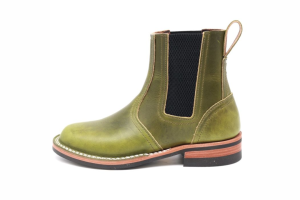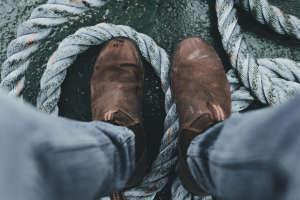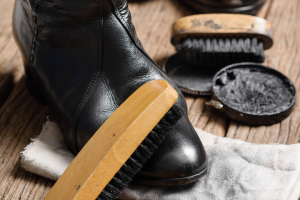The Difference Between Men's And Women's Shoe Sizes
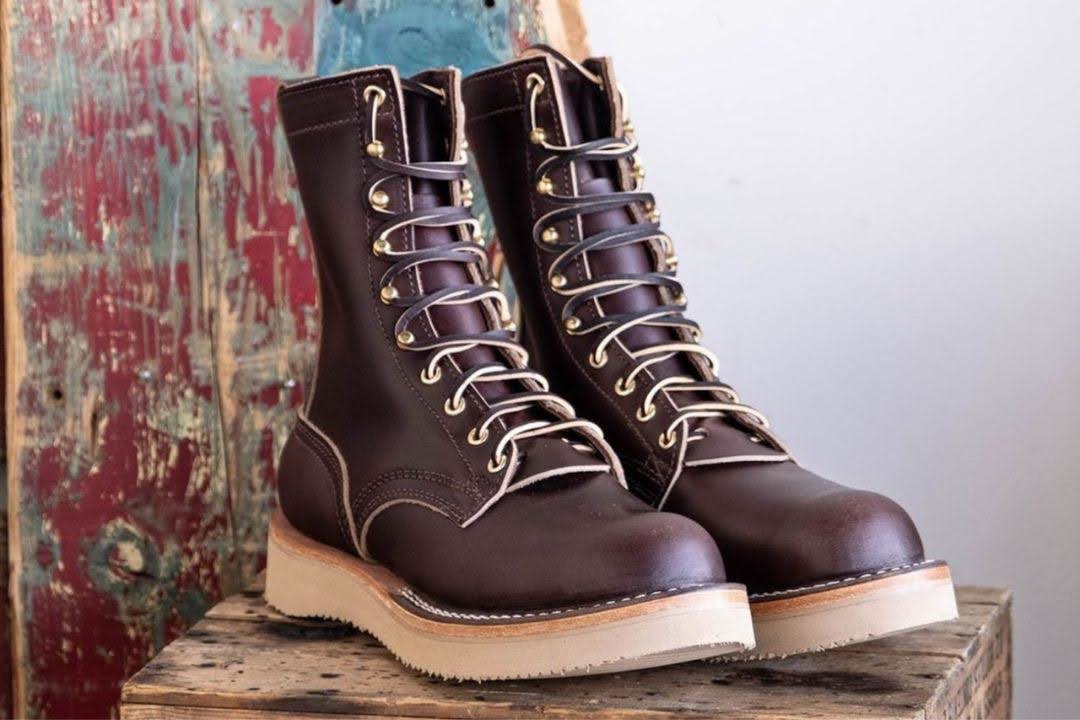
Key Takeaways:
- Size Conversion Basics: Women's shoe sizes are approximately 1.5 to 2 sizes smaller than men's, but width also plays a crucial role in achieving the right fit.
- Importance of Proper Measurement: Regular foot measurements are essential for choosing the correct shoe size, especially as foot dimensions can change over time.
- Material and Design Considerations: The shoe's material and design features like laces and straps significantly affect the conversion and overall comfort of the footwear.
At Nicks Boots, we specialize in footwear sizing, possessing a comprehensive knowledge of the ideal fit. As a reputable provider of high-quality boots suitable for work and leisure activities, we emphasize the significance of precise shoe sizing.
Understanding how to convert men's shoe sizes to women's is a key piece of knowledge for shoppers at Nicks Boots. Whether you're eyeing rugged work boots or stylish casual shoes, knowing how to accurately translate these sizes across genders is essential.
In this piece, we'll cover how to convert men's shoe sizes to women's, including a detailed conversion chart and practical tips for ensuring a comfortable fit. You'll learn about the factors that influence shoe sizing differences and how to make informed choices when purchasing footwear.
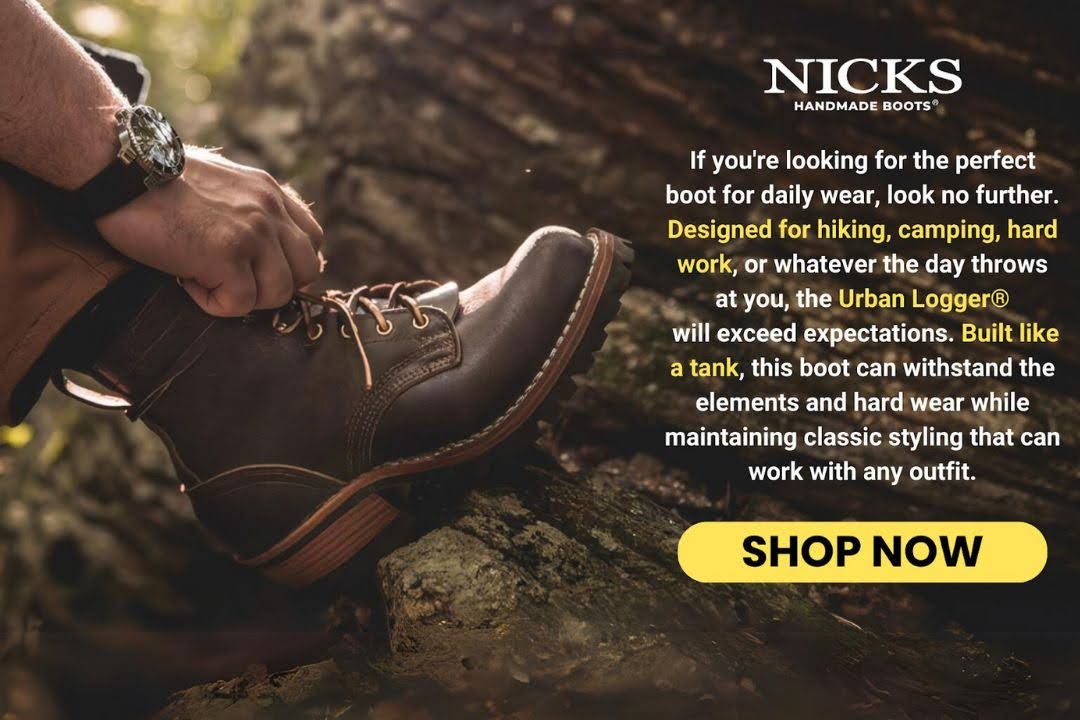

Understanding Shoe Sizing Differences
Historical Context Of Shoe Sizing
Initially, shoe sizing was universal, not differentiating between genders. This changed as the footwear industry evolved, recognizing the need for sizes that cater specifically to the anatomical differences between men's and women's feet. The introduction of gender-specific sizing helped tailor footwear to varying needs and preferences. Today, this differentiation helps ensure a better fit and greater comfort for all wearers.
Differences In Men's And Women's Sizing Today
Men's shoe sizes are typically larger and wider than women's, reflecting average physiological differences between the sexes. This variation can be seen not just in length but also in the width of the shoes, which is crucial for proper foot support. Women's shoes are designed to be narrower, often affecting the fit and comfort for those with wider feet. Understanding these differences is key when looking to buy or convert shoe sizes.
Importance Of Width And Fit
Width is a critical factor in shoe sizing that often goes overlooked when converting between men's and women's sizes. While length is the more obvious dimension, width differences can greatly affect the shoe's fit, impacting comfort and functionality. It's important to consider both dimensions to avoid issues like blisters and foot strain. Proper fit ensures comfort and support, especially in footwear intended for long wear or specific activities.
Ready to find your perfect fit? Visit Nicks Boots today to explore our extensive collection of high-quality footwear, designed for both comfort and durability. Whether you need rugged work boots or stylish everyday shoes, we've got the right size for everyone. Shop now and experience the difference quality makes!
How To Convert Men's Shoe Size To Women's
When converting men's shoe sizes to women's, it's generally recommended to add approximately 1.5 to 2 sizes. For instance, if you wear a size 7 in men's, you would likely fit into a size 8.5 or 9 in women's shoes. This adjustment accounts for the average difference in foot size and width between the genders, ensuring the footwear fits comfortably and appropriately.
- Using A Conversion Chart - Utilizing a conversion chart is crucial for accurate size translation between men's and women's shoes. These charts provide detailed mappings based on length and width, offering a more precise fit than simple numerical adjustments. Always ensure that the chart you use is updated and specific to the brand or style of shoe you are considering, as sizing can vary.
- Checking Fit After Conversion - After using a conversion chart, it's important to physically try on the shoes whenever possible. This step is vital because individual shoe designs and materials can affect the fit. Make sure the shoe provides enough room at the toe and fits snugly around the heel to avoid slipping. Proper trial and fitting will help prevent discomfort and potential foot problems.
Tips For Accurate Sizing When Buying Shoes
Measure Your Foot Regularly
It's crucial to measure your feet regularly, as foot size can change due to various factors like age, weight changes, or health conditions. Accurate measurements ensure you're always choosing the right size, avoiding discomfort from shoes that are too tight or too loose. Use a Brannock device or a ruler and follow the correct measuring technique for the best results. Measuring in the afternoon when feet are typically larger can also help in selecting shoes that fit well all day.
Understand The Brand's Sizing
Each shoe brand may have its unique sizing standards, so it’s important to understand these differences before making a purchase. Review the brand's sizing chart, which can usually be found on their website or in stores. Additionally, read reviews from other customers to gauge whether shoes run large, small, or true to size. This knowledge can save time and reduce the likelihood of returns.
Consider The Shoe Type
Different types of shoes can fit differently even if they're labeled the same size. For example, running shoes often require more toe space to accommodate foot expansion during exercise, whereas high heels might need a tighter fit to ensure stability. Always consider the intended use of the shoes and any special fitting requirements associated with different styles. Trying on shoes later in the day can also ensure a comfortable fit as feet can swell slightly.
Wear Appropriate Socks When Trying On Shoes
The thickness of your socks can significantly influence how shoes fit. For the most accurate fitting, wear the type of socks you plan to use with the shoes during the fitting session. This is especially important for athletic or specialty footwear, where sock thickness can impact comfort and performance. Always check for snugness and comfort with the right socks to avoid adjustments later.
Key Considerations For Switching Shoe Sizes
Factor In Foot Width
When converting between men's and women's sizes, width is a crucial factor. Men's shoes are generally wider than women's, which can result in a poor fit for women wearing men's sizes, especially in the toe and heel areas. Consider the width designation (like D for men and B for women in the U.S.) to ensure a comfortable fit. Always check this aspect in a conversion chart to avoid mistakes.
Account For Style Variations
Different styles of shoes can affect how size conversions work between men's and women's footwear. Boots, for example, are often designed for tighter fits and might not convert as directly as casual sneakers. Consider the construction and intended use of the shoe, as this can influence which size will offer the best fit and comfort. Trying on different styles can also help determine the right size conversion.
Check For Specific Features
Footwear often comes with specific features designed to support particular foot shapes or provide comfort, such as arch support or cushioned insoles. These features can significantly impact how a shoe fits after converting sizes. It’s important to try on the shoes if possible to feel these features in action, as they might make the size feel different than expected. Assess whether these additional features improve the fit or if they necessitate a different size altogether.
Be Aware Of Return Policies
Understanding a store's return policy is essential when purchasing shoes, especially when converting sizes between men's and women's. Given the variability in fit and comfort, having the option to return or exchange shoes without hassle is important. Check the policy details before buying, particularly for online purchases where you can't try shoes on beforehand. This awareness can make the buying process more secure and flexible.
The Impact Of Shoe Design On Size Conversion
Variability Across Shoe Types
Different shoe types such as boots, sandals, and athletic sneakers have unique sizing challenges due to their distinct designs. For example, boots designed for durability and ankle support may offer a snugger fit compared to casual sandals, which are typically looser. This variability necessitates careful consideration when converting shoe sizes between genders. Understanding the specific characteristics of each shoe type helps ensure a better fit when applying size conversions.
Material Flexibility
The material of a shoe plays a significant role in how well it fits after size conversion. Leather, for example, tends to stretch over time and mold to the wearer's foot, potentially altering the fit from when it was new. Synthetic materials might not offer the same flexibility, leading to a firmer fit. Considering the material flexibility can guide better decisions in size conversion to accommodate differences in how materials conform to the foot.
Design Features And Adjustments
Adjustable design features like laces, straps, and buckles can greatly influence the fit of a shoe during size conversion. These elements allow for customization of tightness and fit, accommodating variations in foot shape and size more readily than shoes without such features. For instance, laced shoes can be tightened or loosened to fit a foot that might be wider or narrower than the standard for a given size. This adjustability is crucial for achieving an optimal fit when converting between men’s and women’s shoe sizes.
Purpose Of The Shoe
The intended use of a shoe influences its design and consequently affects size conversion. Athletic shoes are often designed with specific activities in mind, requiring a fit that supports quick movements and provides adequate cushioning, which may differ significantly from formal shoes that prioritize style and slim fit. Understanding the purpose behind a shoe's design can help anticipate how size conversions might vary, ensuring that
Common Mistakes To Avoid In Size Conversion
Ignoring Width Differences
When converting shoe sizes, it’s critical not to overlook the width differences between men's and women's footwear. Men's shoes are generally wider, so a straightforward conversion might result in a poor fit for someone with narrower feet. Always consider both the length and the width to ensure the shoes won’t pinch or slip off. Ignoring this aspect can lead to discomfort and even foot health issues over time.
Relying Only On Numeric Size
Relying solely on numeric conversions without considering brand or style variations is a common pitfall. Different brands often have their own sizing charts, which can vary significantly. It's crucial to look at specific conversion guides for each brand and even model, where available. This approach minimizes the risk of ending up with ill-fitting shoes that could affect comfort and foot health.
Not Trying Shoes On
Not trying shoes on when possible, especially when converting sizes, can lead to unsatisfactory purchases. This is particularly risky when shopping online, where you can't physically check the fit before buying. Whenever possible, visit a store to try on shoes or purchase from online retailers with generous return policies. This way, you can ensure the shoes fit well in all the necessary areas.
Forgetting Seasonal Size Changes
Foot size can fluctuate based on the weather and activity level, often swelling during hot weather or after extensive standing or walking. Not accounting for these changes when purchasing new shoes can lead to choices that are only sometimes comfortable. Consider these factors when trying on and buying shoes, especially if you're buying for an event involving prolonged wear. Selecting adjustable designs or opting for a slightly larger size might be advisable under these circumstances.
Final Thoughts
Understanding the differences between men's and women's shoe sizes goes beyond simple number adjustments; it requires awareness of anatomical differences, brand-specific sizing, and the importance of both shoe length and width. Nicks Boots provides crucial guidance on converting shoe sizes accurately, emphasizing the role of material, design, and intended use in achieving a perfect fit. This article equips readers with the knowledge to make informed footwear choices, ensuring comfort and style are harmoniously combined.


Read also:
Frequently Asked Questions About Mens Shoe Size To Womens
What is the general rule for converting men’s shoe sizes to women’s?
To convert men’s shoe sizes to women’s, add approximately 1.5 to 2 sizes. For example, a men's size 7 translates to a women's size 8.5 to 9.
Why is it important to consider both length and width when converting shoe sizes?
Men's shoes are typically wider than women's, so it is essential to consider both dimensions for a proper fit. Ignoring width can lead to discomfort and foot issues.
Can shoe materials affect the fit after conversion from men's to women's sizes?
Yes, materials such as leather can stretch and mold to the foot, altering the initial fit over time. Consider material flexibility when converting shoe sizes.
How often should I measure my foot to ensure accurate sizing?
It's wise to measure your feet regularly, especially after noticeable physical changes or annually. This helps in selecting the correct shoe size consistently.
Are there different fitting requirements for different types of shoes when converting sizes?
Different shoe types require different fits; for example, athletic shoes need more toe space compared to dress shoes. Adjust size conversions based on the shoe style and intended use.
What should I do if I'm converting shoe sizes for an online purchase?
For online purchases, refer to the brand's specific sizing chart and customer reviews to inform your size conversion. Also, ensure the retailer has a flexible return policy.
Why is it important to try on shoes at the end of the day when buying or converting sizes?
Trying on shoes later in the day accounts for natural foot swelling, ensuring a comfortable fit all day. This helps in selecting shoes that are not too tight after extended wear.
How can adjustable features in shoes help with size conversion?
Adjustable features such as laces and straps allow for customizing the fit, making it easier to accommodate foot width variations. These features are crucial for ensuring a good fit after size conversion.
What role does the purpose of the shoe play in size conversion?
The shoe's purpose affects the required fit; for instance, athletic shoes differ significantly from formal shoes in terms of space and snugness. Consider the activity for which the shoe is intended when converting sizes.
How should I handle seasonal changes when buying or converting shoe sizes?
Account for potential foot size changes due to weather or activity level by selecting adjustable designs or a slightly larger size. This consideration ensures comfort across different conditions.

